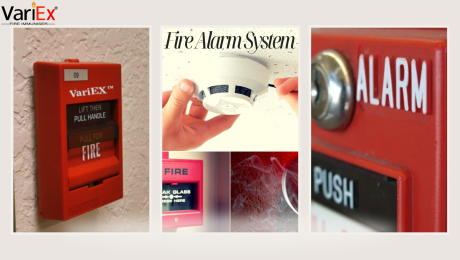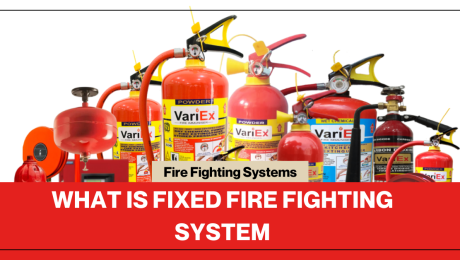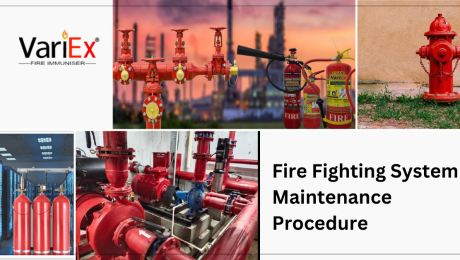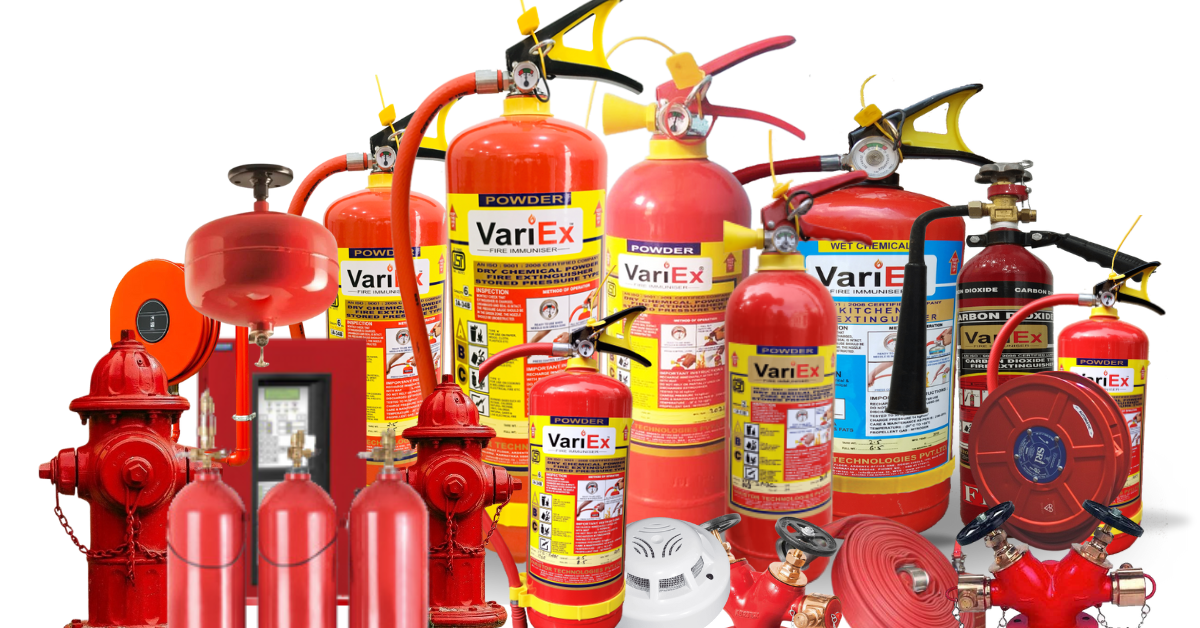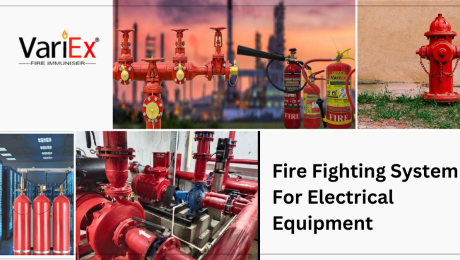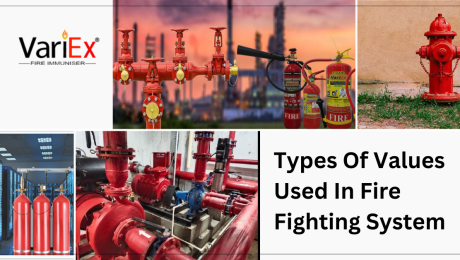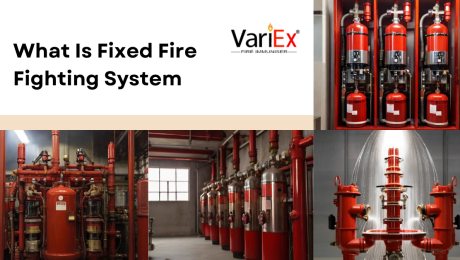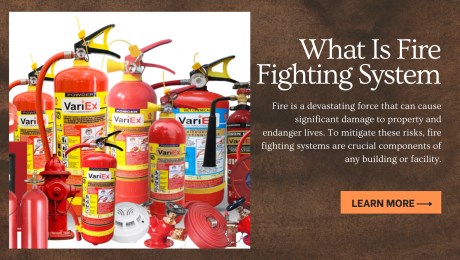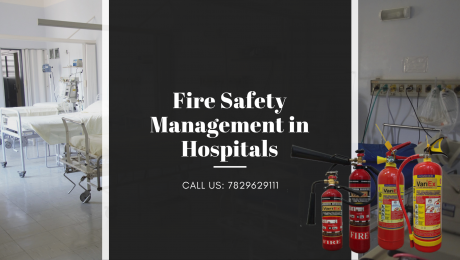Fire Safety at hospital is paramount to protect patients, staff, and crucial medical equipment. Stringent protocols include fire-resistant materials, cutting-edge detection, and suppression systems. Regular drills and staff training ensure swift evacuation procedures. Emergency exits are well-marked and accessible, and special measures are in place for critical areas. Routine inspections of electrical systems identify potential hazards, and fire prevention takes precedence to safeguard patients. Hospitals strictly adhere to safety regulations, fostering a secure healthcare environment. By prioritizing fire safety, hospitals remain well-prepared for emergencies, minimizing potential risks and ensuring the well-being of everyone within the facility. Continuous staff training and compliance with safety measures create a robust safety culture in hospitals, contributing to the overall security of the healthcare environment.
How Do Fire Alarm Systems Work
- Published in Fire Alarm, Fire Fighting System, Fire Safety Equipment
What Is Fire Alarm Panel
- Published in Fire Alarm, Fire Fighting System, Fire Safety Equipment
Benefits of ERT (Emergency Response Team) Training in Fire Safety
- Published in ERT Training, Fire Extinguisher
Which Gas Used In Fire Extinguisher
What Is Fixed Fire Fighting System
Understand How Fire Fighting System Works
- Published in Fire Extinguisher, Fire Fighting System, Fire Safety Equipment
What Are The 4 Types Of Fire Protection Systems?
What Are The Main Components Of Fire Fighting System?
Fire Fighting System Maintenance Procedure
Regular maintenance of fire fighting systems is essential to ensure their continued functionality and reliability in the event of a fire emergency. This guide outlines the key procedures involved in maintaining fire suppression systems to mitigate risks and protect lives and property.
1. Scheduled Inspections:
- Conduct scheduled inspections of all components of the fire fighting system, including control panels, piping, nozzles, detectors, fire alarms system, and fire extinguishers.
- Inspections should be performed by qualified technicians according to manufacturer guidelines and regulatory requirements.
2. Functional Testing:
- Perform functional tests of the entire fire fighting system to verify proper operation and response.
- Test alarms, detectors, and suppression equipment to ensure they activate as intended.
- Simulate fire scenarios to assess the system’s effectiveness in detecting and suppressing fires.
3. Inspection of Components:
- Inspect piping, valves, and nozzles for signs of corrosion, leaks, or damage.
- Check detectors and alarms for proper positioning, cleanliness, and functionality.
- Verify that control panels and electrical connections are secure and free from defects.
Fire Fighting System For Electrical Equipment
In today’s technologically driven world, the reliance on electrical equipment is ubiquitous, spanning industries from manufacturing plants to data centers and commercial buildings. However, alongside the convenience and efficiency these systems provide, there exists a persistent risk of electrical fires. These fires, often swift and devastating, pose significant threats to personnel safety, property integrity, and business continuity. To address this critical issue, the implementation of comprehensive fire fighting systems specifically tailored for electrical hazards is paramount.
Types Of Valves Used In Fire Fighting System
In the realm of fire safety, the effectiveness of fire fighting systems relies heavily on the proper functioning of various valves. These valves play a critical role in controlling the flow of water, directing it to the areas where it’s needed most during fire suppression efforts. This article delves into the different types of valves used in fire fighting systems, highlighting their functions and importance in ensuring swift and effective response to fires.
What Is Fixed Fire Fighting System
A fixed fire fighting system refers to a comprehensive fire suppression system installed in a building or an industrial facility. It is designed to automatically detect and extinguish fires in their early stages without human intervention. This system typically consists of a combination of sensors, detectors, valves, pipes, and nozzles strategically placed throughout the area to provide effective fire protection. Examples of fixed fire fighting systems include sprinkler systems, gas suppression systems, water mist systems, and foam systems. These systems are crucial in preventing the rapid spread of fire and minimizing damage to property, as well as ensuring the safety of occupants and employees. It is essential to regularly inspect, maintain, and test these systems to ensure their proper functioning when needed.
What Is Fire Fighting System
A fire fighting system is an essential safety measure implemented in buildings to mitigate the risks associated with fire incidents. It comprises a combination of equipment, devices, and procedures designed to detect, control, and extinguish fires effectively. The primary components of a fire fighting system include fire detection and alarm systems, fire extinguishers, fire hydrants, and automatic sprinkler systems. Fire detection and alarm systems are crucial in early fire detection and alerting occupants, enabling them to evacuate the building promptly while the fire is extinguished. Fire extinguishers provide a means to extinguish small fires before they escalate, whereas fire hydrants connect to the municipal water supply and ensure a continuous flow of water for firefighting operations. Automatic sprinkler systems play a critical role in suppressing fires, as they activate automatically when the ambient temperature rises above a predetermined level. Overall, a well-designed fire fighting system is crucial for safeguarding life and property in the event of a fire emergency.
Fire Safety Management in Hospitals
Fire safety in hospitals is of the most paramount relevance of healthcare facility management by considering the safety of the patients. Fire safety or fire protection is a significant norm that needs to be considered especially during the construction of a hospital, because, it is a tough task to evacuate the people from the hospitals as compared to the general buildings.
Fire can cause irreparable losses, particularly to any hospital, which is comprised of a high density of life in terms of patients, doctors, staff, many heat dissipating equipment, combustible gasses /fuel, chemicals, a lot of electrical wiring, etc. If proper precautions not taken while planning to build any hospital then it may stand as prone to hazardous incidents. For that reason, utmost care needs to be taken and precautions followed to take in good safety measures & practices amongst planners, employees & healthcare workers in any hospital.
- Published in Fire Extinguisher


